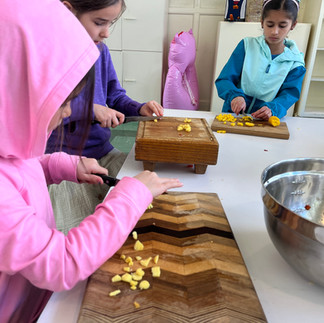Every year the American Library Association awards one Caldecott Medal to the picture book with the best illustrations and several “Caldecott Honors” to runners-up. Over the past few weeks, our librarian, Mari Pongkhamsing, read Caldecott Medal contenders to elementary students, and they voted for their favorites to win a “Mock Caldecott Medal.”
Julie Leung's book The Truth about Dragons, illustrated by Hanna Cha, won our students’ Mock Caldecott, as well as a real Caldecott Honor award. It also won the Asian Pacific American Librarians Association picture book award. It tells the story of a boy exploring his mixed White and Asian cultural heritage in a whimsical adventure through two forests. He learns about the fierce dragons of European legends and the majestic Chinese dragons, and that, as Kirkus Review summarizes, “both worlds, though distinctly different, exist within the child and are open to be explored.”
Big, written and illustrated by Vashti Harrison, received Caldecott Honors from three of our classes and won the real Caldecott Medal this year. It tells the story of a girl struggling with how society sees her and learning to love herself no matter what.
In addition to voting to select the class’s award winners, students wrote brief summaries of the books and drew pictures inspired by the illustrations. Some of these are visible in the photos here, along with the yellow ribbons (most votes from a class) and blue ribbons (honor awards for second and third most votes per class). The real Caldecott awards are shown, too (gold for the winner and silver for honors), along with others, like the Coretta Scott King Book Awards, which are given for "outstanding books for young adults and children by African American authors and illustrators that reflect the African American experience."
It’s been exciting to see Ms. Mari nurture our students’ love of reading and admiration for diverse voices. We’re so appreciative of her and the authors and illustrators who make the world of children’s literature so powerful and enchanting. Looking forward to new books in 2024!





















































